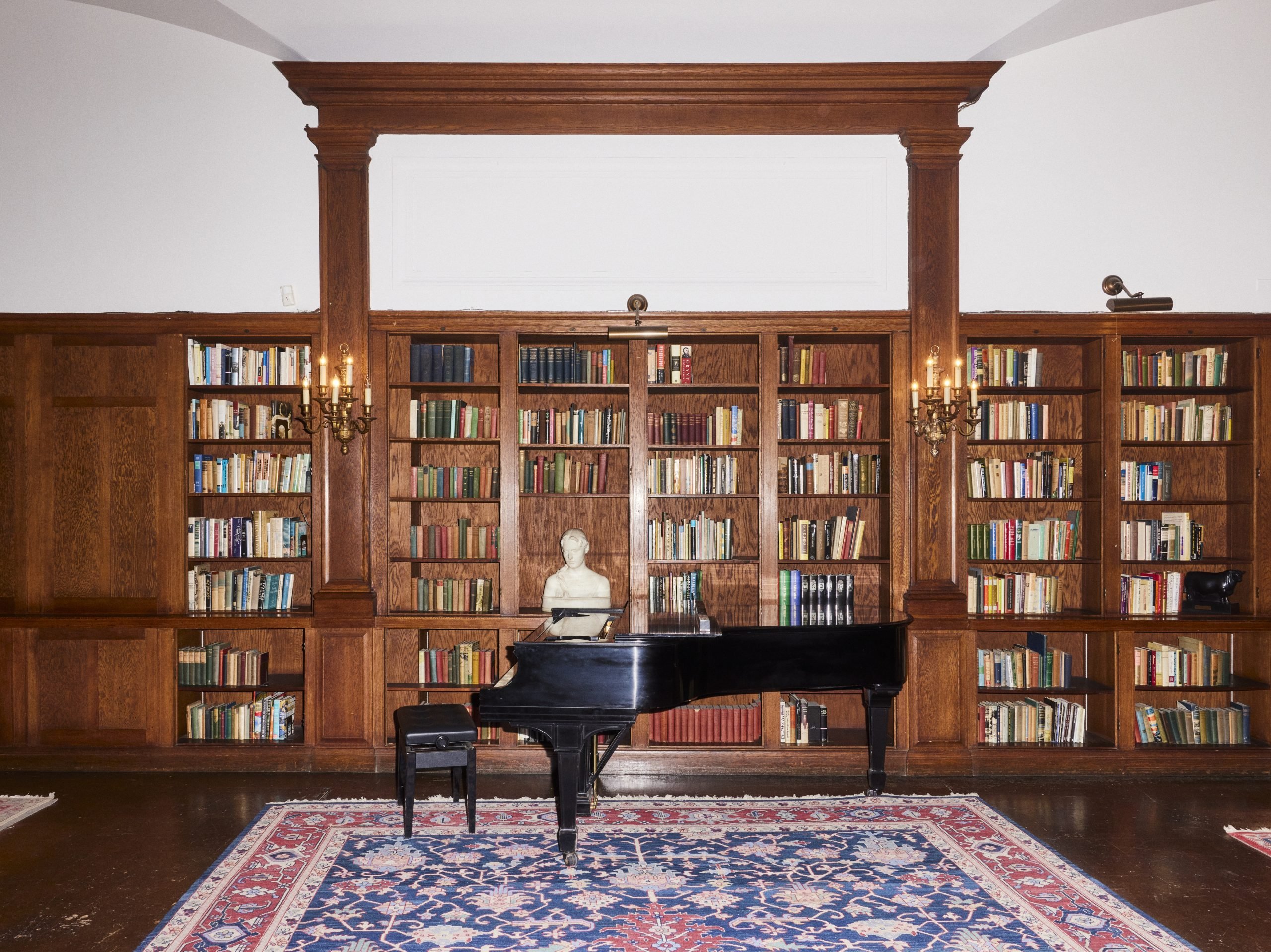
You may not have heard of the American Academy of Arts and Letters, but New Yorker art lovers are going to want to add it to their regular rotation of art spaces come this fall. The venerable institution, founded in 1898, is launching a new year-round, multi-disciplinary exhibition program in its Washington Heights galleries.
The inaugural exhibitions, opening in September, will be a commissioned sound art installation by the Native American artist and composer Raven Chacon, and the first U.S. solo show for the late conceptual artist Christine Kozlov.
“Since its founding, Arts and Letters has been about artists supporting the arts,” chief curator Jenny Jaskey told me. “We give artists awards and recognize and honor them every year. Now we’re able to offer the artists a chance to make new work and show new commissions in our incredible space. It’s a very exciting way to continue our mission.”
Arts and Letters is a 300-member honor society of artists, architects, composers, and writers. Since 1923, it has been housed at Audubon Terrace, a museum complex at 155th Street and Broadway created by Archer M. Huntington. He was a member of the academy, and also founded the neighboring Hispanic Society Museum and Library.
The Academy of Arts and Letters. Photo by Jeremy Liebman, courtesy of the Academy of Arts and Letters.
Huntington envisioned Audubon Terrace—named for the artist and naturalist John James Audubon, who owned the land—as a premiere destination for museum and cultural organizations. It’s a beautiful campus, just a block from the 1 train with a suite of Beaux Arts buildings designed by Charles Pratt Huntington, Cass Gilbert, and McKim, Mead, and White surrounding a central courtyard.
But as the years went on, it became difficult to draw visitors that far north. The other tenants—the American Geographical Society, the American Numismatic Society, and the Museum of the American Indian, which is now part of the Smithsonian—all moved downtown. Audubon Terrace might as well have been “the Arctic Circle of New York’s cultural globe,” as the New York Times put it in 2010.
But a bright new chapter is now dawning for Audubon Terrace. Last June, the Hispanic Society reopened its renovated main building after being closed for over five-and-a-half years. And come September, Arts and Letters will be another reason to head uptown. In a neighborhood lacking in major cultural destinations, it’s an opportunity to become a resource for the local community, as well as a destination for those living beyond.
The members’ room at the Academy of Arts and Letters. Photo by Jeremy Liebman, courtesy of the Academy of Arts and Letters.
“We’re very excited,” Jaskey said. “We have regular conversations with the Hispanic Society about ways that we can enliven the spaces of Audubon Terrace for the public, and even coproduce programming.”
Both organizations offer free admission.
Early in its history, the academy hosted regular exhibitions, including of work by Huntington’s wife, the great sculptor Anna Hyatt Huntington. (The terrace features some of her work.)
“In our archives, we see there were 50,000 visitors a year attending these exhibitions,” Jaskey said.
But since the post-war era, there have typically only been two shows each spring, one of invited contemporary artists, and one featuring Arts and Letters’ new members and annual award winners.
The publications room at the Academy of Arts and Letters. Photo by Jeremy Liebman, courtesy of the Academy of Arts and Letters.
To devise a new exhibition program for the 21st century, the curator consulted with a committee of academy member artists. (The list is impressive: Mel Chin, Charles Gaines, Ann Hamilton, Joan Jonas, and Amy Sillman.) The result is an opening slate of shows that incorporates sound art, conceptual art, photography, painting, film, and performance.
“Thinking quite broadly is very important to Arts and Letters, because it does represent all the disciplines,” Jaskey said.
She’s enlisted art historian Rhea Anastas to guest curate the exhibition for Kozlov. The artist was a foundational part of the Conceptual art movement, and appeared in Lucy Lippard’s landmark 1971 feminist art exhibition “26 Contemporary Women Artists” at the Aldrich Contemporary Art Museum in Connecticut.
“She was one of its core practitioners and was even the author of one of the very first texts on conceptual art ever written,” Jaskey said.
The show will include everything from paintings and drawings to far less traditional works made with notebooks, audio recorders, and telegrams, which Kozlof sometimes sent to museums as a means of submitting to a show.
Raven Chacon. Photo courtesy of the MacArthur Foundation.
Chacon, a recipient of a MacArthur genius grant and the Pulitzer Prize, will draw on the site’s history as the Audubon homestead for his project. Presented in the academy’s north gallery, in a glass ceilinged room designed by Gilbert, it will feature recordings of bird song in a nod to Audubon’s famed Birds of America.
“That gallery has a really long sound decay of about 20 seconds. There’s a lot of reverb in this space,” Jaskey said. “The piece going to deal with some of that history of the land and of the neocolonial architecture.”
Arts and Letters sits on Lenape land, in an area originally called Penadnic, just off the Wickquasgeck Trail, known today as St. Nicholas Avenue. And Audubon’s legacy is being reevaluated, as he was an enslaver and anti-abolitionist.
The exhibition will also feature a special event featuring composer Wadada Leo Smith, an Arts and Letters member, performing a concert with Chacon, a former student.
Looking further ahead, there will be the premiere of a durational performance by choreographer Jonathan González in October, and spring solo shows for photographer and filmmaker Elle Pérez and Los Angeles-based painter Teresa Baker.